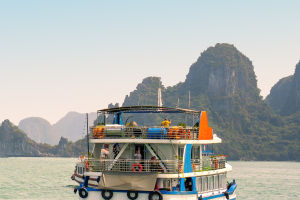The seaside is a natural wonderland that is home to a diverse range of rocks, each with its own unique characteristics and properties.
These rocks are typically divided into three main categories: sedimentary, metamorphic, and magmatic rocks.
Sedimentary rocks are formed through the accumulation and cementation of sediment, such as sand, silt, and clay.
They are often found at the bottom of lakes, rivers, and oceans and are commonly identified by their distinct layering patterns.
Examples of sedimentary rocks that can be found at the seaside include sandstones, conglomerates, and shales.
Sandstones are composed of sand-sized grains of minerals, such as quartz and feldspar, that have been compacted and cemented together over time. Conglomerates are composed of large, rounded fragments of rocks, while shales are composed of fine-grained sedimentary particles that have been compacted and cemented together.
Metamorphic rocks, on the other hand, are formed through the transformation of existing rocks due to high pressure and heat.
This process, called metamorphism, can occur when sedimentary or magmatic rocks are subjected to intense pressure and heat deep beneath the Earth's surface.
As a result, metamorphic rocks are typically harder and more resistant to weathering and erosion than sedimentary rocks.
Examples of metamorphic rocks that can be found at the seaside include slate, marble, and gneiss.
Slate is a fine-grained metamorphic rock that is composed of clay minerals, while marble is a coarse-grained metamorphic rock that is composed of calcite or dolomite minerals.
Gneiss is a coarse-grained metamorphic rock that is characterized by alternating light and dark bands of minerals.
Magmatic rocks, also known as igneous rocks, are formed through the cooling and solidification of magma or lava.
They are commonly found in areas where volcanic activity has occurred, such as near the seaside.
Magmatic rocks can be classified into two main types: intrusive and extrusive.
Intrusive rocks are formed when magma cools and solidifies slowly beneath the Earth's surface, while extrusive rocks are formed when lava cools and solidifies quickly on the Earth's surface.
Examples of magmatic rocks that can be found at the seaside include basalt, granite, and pumice.
Basalt is a fine-grained extrusive rock that is commonly found in volcanic areas, while granite is a coarse-grained intrusive rock that is composed of minerals such as quartz, feldspar, and mica. Pumice is a light-colored, porous extrusive rock that is formed from frothy lava.
The seaside is a fascinating geological environment that is rich in a variety of rocks.
Understanding the different types of rocks and their characteristics can help us appreciate the natural beauty and complexity of the coastal landscape. Sedimentary rocks, metamorphic rocks, and magmatic rocks all have their own unique properties and are formed through different geological processes.
By learning more about these rocks, we can deepen our appreciation for the natural world and the forces that have shaped it over millions of years.


